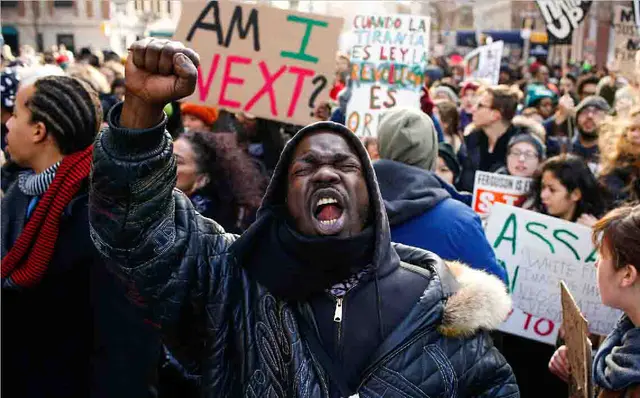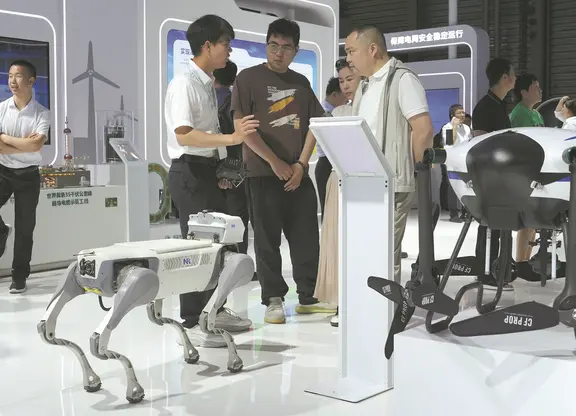China strongly condemns and firmly opposes the U.S. tariff proposals and is ready to take countermeasures on U.S. products, the Ministry of Commerce (MOC) said Wednesday.
A MOC spokesperson made the statement after the U.S. administration announced a proposed list of products subject to additional tariffs, which covers Chinese exports worth 50 billion U.S. dollars with a suggested tariff rate of 25 percent.
"Disregarding strong representations by China, the United States announced the tariff proposals that are completely unfounded, a typical unilateralist and protectionist practice that China strongly condemns and firmly opposes," according to the statement.
The U.S. side published the list in disregard of the mutually-beneficial and win-win nature of the China-U.S. commercial cooperation in the past 40 years, the appeal of the Chinese and American business communities and the interests of consumers, it said.
The move went against the interests of China, the United States and the world economy, seriously violating the basic principles and spirit of the World Trade Organization (WTO).
China plans to immediately bring relevant U.S. practice to the dispute settlement body of the WTO, and is ready to take countermeasures on U.S. products with equal force and scale that will be published in the coming days.
"We have the confidence and ability to respond to any U.S. trade protectionist measures," the spokesperson said.
An aircraft engine being built at Honeywell Aerospace in Phoenix, Arizona, the United States.
Chinese Foreign Ministry spokesman Lu Kang also made a response Wednesday, saying the U.S. tariff proposals are "typical unilateralist and protectionist action."
China strongly condemns and firmly opposes such action, Lu said.
Despite strong warnings from business groups and trade experts, U.S. President Donald Trump signed a memorandum on March 22 that could impose tariffs on Chinese imports and restrictions on Chinese investment in the United States.
The memorandum is based on a Section 301 investigation, launched by the Trump administration in August 2017, into alleged Chinese intellectual property and technology transfer practices.
The move came after the U.S. administration took an increasingly hawkish turn on China, as it blamed its trade deficit with major trading partners for its domestic economic woes and job losses.
The Chinese embassy in Washington said in a statement that "we hope that the US side, with sense and long-term picture in mind, refrains from going further down the wrong path".
The USTR said its proposed list of products is based on extensive interagency economic analysis and would target products that benefit from China's industrial plans while minimizing the impact on the US economy.
Sectors subject to the proposed tariffs include industries such as aerospace, information and communications technology, robotics and machinery. The list covers mostly industrial products and non-consumer goods, such as aircraft seats, military rifles, machine parts, instruments, medical products, video monitors, and furnaces and ovens.
US Trade Representative Robert Lighthizer and White House trade adviser Peter Navarro both said recently that the Section 301 tariffs will primarily target Chinese industries under the Made in China 2025 strategy.
A robot is displayed at a news conference in Beijing, March 30, 2017.
Lighthizer has described that strategy as a threat to the global trading system, while Navarro said China was "going to dominate every single emerging industry of the future, and therefore your economies aren't going to have a future".
The Made in China 2025 plan, unveiled in 2015, highlighted 10 sectors in advancing China's modern manufacturing power — information technology, high-end machinery and robotics, aerospace, marine equipment and ships, advanced rail transport, new-energy vehicles, electric power, agricultural machinery, new materials and biomedical.
Premier Li Keqiang said in Beijing last week that the Made in China 2025 strategy is an open and fair environment with equal treatment of domestic and overseas businesses.
"China will not force any technology transfer from any foreign company and will enhance efforts to protect intellectual property rights and severely crack down on infringement, and China welcomes more globally competitive businesses to share the China growth opportunities," Li said.
The USTR's proposed list will undergo further review in a public notice and comment period, including a hearing. After completion of the process, the USTR will issue a final determination on the products subject to the additional duties.
"The tariffs will mostly increase the price of intermediate goods and hurt US manufacturers who are supposed to be the beneficiaries of Trump's trade policies. It does not seem well thought through," said Edward Alden, a senior fellow at the Council on Foreign Relations.
Trump said on Tuesday before the announcement that the US will be working with China. "Our relationship is very good with China. We intend to keep it that way. But we have to do something to seriously relieve that trade deficit," he said, repeatedly mentioning a bilateral trade deficit of $500 billion.
A C919 airplane takes off from the Shanghai Pudong International Airport for a test flight to Xi'an, Northwest China's Shaanxi province, on Nov 10, 2017.
The US trade deficit with China, however, was $375 billion, according to US data, and $275 billion according to Chinese data.
Most economists believe the bilateral trade deficit does not matter, and the US trade deficit is a result of its own fiscal policies and the role of the US dollar as a global currency.
The Trump administration tax-reduction plan, which went into effect in February, is expected to drive up the US trade deficit.
A Deutsche Bank Research report last week pointed out that the US-China trade imbalance is misleading because it includes only trade but not the sales generated through US subsidiaries based in China, which reached $223 billion in 2015 and are rising.
According to the bank's aggregate sales balance, the bilateral imbalance was only $30 billion in favor of China but moving in favor of the US.
Trump also repeated on Tuesday what he has said before. "We helped rebuild China," he told the media in a meeting with leaders of several Baltic nations.
"The Chinese people rebuilt China, not outsiders," said Yukon Huang, a senior fellow of the Asia program at the Carnegie Endowment for International Peace.
A former World Bank country director for China, Huang said Chinese did this by drawing on their exceptionally high savings rates to fund much needed investments that led to a dramatic increase in productivity.
He said that unlike many other developing countries, China relied relatively little on foreign aid but more on foreign direct investment (FDI) facilitated by the Asian Chinese diaspora.
"The US actually provided relatively little financial support, since only about 1 to 2 percent of America's FDI over the past two decades went to China," Huang said.
(ASIA PACIFIC DAILY & CHINA DAILY)
 简体中文
简体中文





